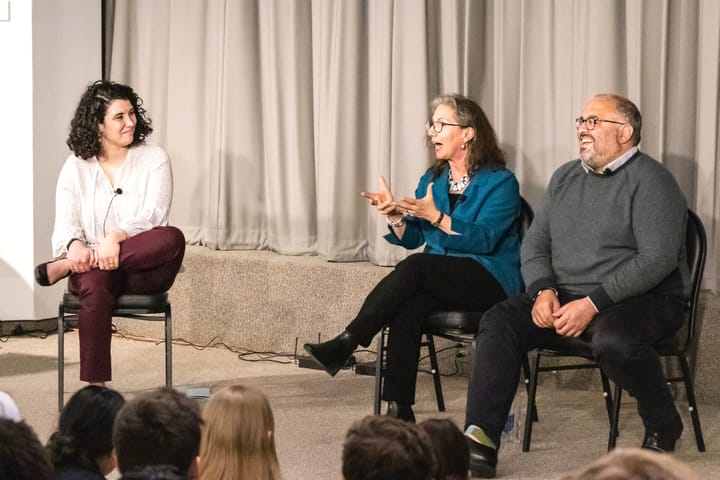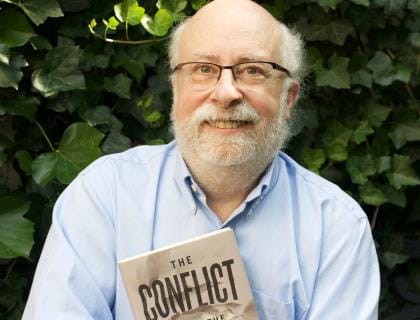Amherst Approves Reparations for Black Residents. How is the College Involved?
This summer, the Town of Amherst established a fund that will provide reparations to Black residents. The initiative intends to make amends for the town’s past harms as the community continues to grapple with its relationship to institutionalized racism.
The Amherst Town Council voted on June 21 to establish a reparations fund for its Black residents, aiming to make amends for past harms. The vote followed an almost year-long advocacy effort by the grass-roots organization Reparations for Amherst (R4A). While the college has expressed interest in collaborating with the town’s efforts, it has not committed to a specific way of doing so. Many community members agreed that this is just the beginning of necessary work that should engage the whole community and has the potential to bring about real and impactful change.
Town conversations surrounding reparations began with a community petition in the aftermath of the death of George Floyd last June, as the nation grappled with questions of how to pursue justice in a system marked by institutionalized racism.
While Amherst is perceived by many as progressive, equitable and untainted by the ills of structural racism, its history shows the very real presence of white supremacy, with documented slaveholding, exclusion of Black people from housing and public spaces, as well as anti-Black hate crimes. Sustained discrimination has also resulted in continuing disparities between Black and white residents in areas including housing, education, health and income.
Members of R4A — who led the charge in putting out the petition, meeting with town councilors and elucidating Amherst’s history of racism and need for reparations — modeled their initiative off of the reparations effort in Evanston, IL, which became in March the first government in the country to pass a reparations plan. Although, on the national level, the late U.S. representative John Conyers Jr. worked to pass a reparations bill through Congress for more than 30 years, only a handful of local governments have taken steps toward making reparations a reality.
In Amherst, $210,000 has already been earmarked to be transferred into the newly established reparations fund, which also accepts contributions from private donors. President of the Town Council Lynn Griesemer emphasized a distinction from the Evanston reparations program — which is planned to be funded from cannabis tax proceeds — explaining that while the funds are equivalent to a portion of the cannabis revenue from this year, the money is not the cannabis revenue. “We wanted to make sure that it was not that revenue, because we don’t know where that revenue will be in the future,” said Griesemer.
The Town Council also approved the formation of the African Heritage Reparations Assembly (AHRA) — to be made up of six Black residents and one representative from R4A — to conduct outreach to the Black community and develop a plan for reparations. Appropriations from the fund toward “lawful reparations purposes” will be made at the recommendations of the assembly, with a two-thirds vote from the Town Council required for approval, the Hampshire Gazette reported. Attorneys at KP Law, based in Boston, will deem what is lawful.
“It's important, especially for non-Black people, to understand that reparations are always decided by the injured party,” said Michele Miller, co-founder of R4A and resident of Amherst. “In this case, because it is a municipal process, the proposals will need to be voted on by the Town Council, but my hope is that whatever proposals come forward from the Black community will be approved.”
As the town is still in the process of recruiting members to serve on the assembly, the specific purposes for which the fund will be used have yet to be decided on, said Griesemer. She noted, however, that likely uses of the fund include promoting housing ownership, expanding educational opportunities and reducing health disparities.
Karen Sanchez-Eppler, the L. Stanton Williams 1941 professor of American studies and English, who lives in Amherst and signed the community petition for reparations, saw the establishment of the fund as an important step toward redressing past wrongs. “I am pleased that Amherst is the first Massachusetts town to pass such a motion,” she said. “Now we have to make it real.”
“My father was born in Berlin in 1930, and he and his parents received reparations payments from the German government that mattered for them both economically and, I think, psychologically,” she added. “So I do know in a fairly immediate way that reparations can be meaningful tools for healing historical trauma.”
When asked whether the college intends to contribute to the town’s reparations efforts, Chief Communications Officer Sandy Genelius responded, “An effective anti-racism plan is necessarily collaborative. Any effort that stops at the edge of campus would be myopic, incomplete and deficient. We have had preliminary communication with the town and are eager to hear more specific information about the town’s plans, which we understand are being developed, and to respond as the Amherst College community.”
Miller said that R4A knew from the beginning that they wanted to engage the community with their work, especially large stakeholders like the college and nearby University of Massachusetts, Amherst (UMass). She lauded the college’s efforts in identifying its own history, explaining that it was presenting their research into the history and continued presence of racism in Amherst that really helped the community understand the need for reparations and laid the foundation for the town to commit to a reparations fund.
Collaboration on the research front is already underway, reported Anna Smith ’22, The Student’s managing design editor. Smith worked as a research assistant in the spring for the Racial History of Amherst College project led by Head of the Archives & Special Collections Mike Kelly, which examines the relationship that founders of and donors to the college had with slavery and the extent to which they were holders of enslaved people.
She has continued the research over the summer and just recently started working with R4A to compile evidence of the town-gown relationship throughout the years and show how the college has contributed to anti-Black racism in the town. Smith said she aims to use the research to compel the college to contribute to the fund for reparations.
Digging into the archival history of the college showed just how difficult it is to separate the college and the town in their entanglements with slavery and racism, Kelly told The Student. He cited the example of Reverend David Parsons, first pastor of the first church in Amherst, who is documented to have held slaves on the land that is now where the Octagon, the yellow building just west of South Hall, stands. “Even though that was part of the town at the time, that land was given to Amherst College,” he explained. “And so we know for a fact that there were three people held in slavery on land that is now part of Amherst College's campus.”
Kelly noted that such archival work has vast potential for informing what reparations should look like. “I can go on and on about these different historical documents in detail. But all of that is so that the community at large can start answering, ‘Okay, now that we know what we know, to whom does the college owe what?’” he said.
“This really is an opportunity for us to show what research and the humanities and good scholarship can actually contribute to a national conversation,” Kelly continued. “When I hear people being dismissive of reparations because you couldn't possibly figure out who should get the money, my response is to say, ‘Well, let's see if we can.’ And actually, we can.”
“Working through what we are collectively learning takes time,” said Genelius. She stated that the college can “bring its talents and skills, especially with regards to research and scholarship, to further uncover and interpret this painful history and join in the effort to repair the harm caused.”
Both Kelly and Miller also encouraged more Amherst students to get involved in putting reparations into practice, from learning about the history to contributing to the conversation on the form reparations in Amherst will take.
“I certainly think that students [should make] their voices heard with respect to what they believe is right,” echoed Mattea Kramer ’07, who led R4A’s research efforts and currently resides in Amherst. “What ought the college to do now vis-a-vis its racial history and what we know? The answer to that question [is something] we all have to decide together.”
Kramer went further to emphasize the truly radical nature of pursuing local reparations and the lessons it can teach about effecting change: “For someone to say, we could do reparations here — to decide that it was possible, and then to take up the mantle of making it so — is absolutely abstract thought, and I want to underscore that. Having that capacity to create something from nothing, to envision what should be but isn’t yet, is what changes the course of history.”
Change at the national level often starts at the local level, added Charles “Chuck” Lewis ’64, H’03, P’93, a life trustee of the college, who is active in the Evanston reparations effort and advised the initiative in Amherst. When people think of school desegregation, for instance, “they think of the 1954 Supreme Court decision,” he said. “But all that work started years before.”
“The architect of that work was an Amherst alum[nus], Charles Hamilton Houston, who was Thurgood Marshall's mentor,” Lewis continued. “Houston and Marshall and others started working to desegregate schools, locality by locality, state by state. So the same thing here, right? Not trying to do it at a federal level, but starting at a local level — and hopefully over time, it spreads.”





Comments ()